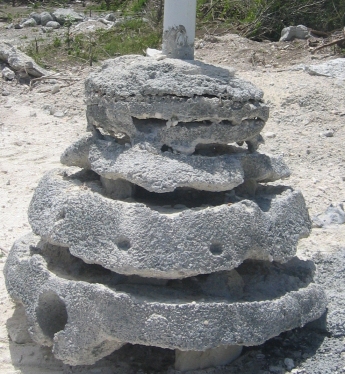The DR government has announced a 4 month ban on removing lobsters from Dominican waters from March 1st to June 30th. This is the lobster breeding season.
During that time it is prohibited to catch, process or have lobster meat in your possession. Restaurants must have proof that lobster in their freezers was purchased before March 1st.
The ban is in DR, Belize, Costa Rica, Guatemala, Honduras, Nicaragua and Panama
25 Febrero 2013, 7:11 PM
Anuncian prohibici?n de captura y comercializaci?n de las especies de langosta
Con el objetivo de proteger la especie en su periodo de mayor reproducci?n, la Rep?blica Dominicana se adhiri? a la Veda Regional Simult?nea de la pesca de Langosta del Caribe, la cual regir? desde el d?a primero de marzo al 30 de junio de 2013.
Para el cumplimiento de la disposici?n, el director ejecutivo del Consejo Dominicano de Pesca y Acuicultura (CODOPESCA), del Ministerio de Agricultura, Francisco Fr?as, emiti? un aviso donde notifica a todos los involucrados en la actividad pesquera y la comercializaci?n, que durante este periodo est? prohibida la captura, el procesamiento, la tenencia de carne o masa y la comercializaci?n de las especies de langosta espinosa, la langosta pinta, langosta de piedra y mama langosta.
El funcionario informa que la veda fue certificada por la Secretar?a General del Sistema de Integraci?n Centroamericana (SICA), seg?n el Reglamento OSP-02-09, para el ordenamiento regional de la pesquer?a de la Langosta del Caribe (Panulirus argus).
Asimismo, exhorta a los propietarios y administradores de supermercados, hoteles, restaurantes, pescader?as y a los pescadores, abstenerse de comercializar y capturar esta especie durante el periodo establecido.
Fr?as advierte sobre la obligaci?n de todo pescador y/o propietario de embarcaciones pesqueras, de sacar del agua y almacenar toda arte de pesca utilizada para la captura de langosta, incluyendo nasas y chinchorros langosteros.
Indica que la no observancia y cumplimiento de esta veda est? tipificada en dicho Reglamento y en la ley 307-04, de CODOPESCA, como ?infracci?n muy grave? y ser? sancionada con multas de diez (10) salarios m?nimos del sector p?blico y/o penas de dos (2) a diez (10) a?os de prisi?n.
El funcionario explica que CODOPESCA concede diez (10) d?as h?biles, a partir de la fecha de inicio de la veda, para recibir las declaraciones de existencia en almac?n de estos productos, la cual ser? verificada y certificada por la instituci?n.
La primera veda simult?nea de la langosta del Caribe se hizo en marzo del 2010, siendo la de este a?o la tercera consecutiva y regir?, adem?s de la Rep?blica Dominicana, para Belice, Costa Rica, Guatemala, Honduras, Nicaragua y Panam?.
Anuncian prohibici?n de captura y comercializaci?n de las especies de langosta - ElNacional.com.do
During that time it is prohibited to catch, process or have lobster meat in your possession. Restaurants must have proof that lobster in their freezers was purchased before March 1st.
The ban is in DR, Belize, Costa Rica, Guatemala, Honduras, Nicaragua and Panama
25 Febrero 2013, 7:11 PM
Anuncian prohibici?n de captura y comercializaci?n de las especies de langosta
Con el objetivo de proteger la especie en su periodo de mayor reproducci?n, la Rep?blica Dominicana se adhiri? a la Veda Regional Simult?nea de la pesca de Langosta del Caribe, la cual regir? desde el d?a primero de marzo al 30 de junio de 2013.
Para el cumplimiento de la disposici?n, el director ejecutivo del Consejo Dominicano de Pesca y Acuicultura (CODOPESCA), del Ministerio de Agricultura, Francisco Fr?as, emiti? un aviso donde notifica a todos los involucrados en la actividad pesquera y la comercializaci?n, que durante este periodo est? prohibida la captura, el procesamiento, la tenencia de carne o masa y la comercializaci?n de las especies de langosta espinosa, la langosta pinta, langosta de piedra y mama langosta.
El funcionario informa que la veda fue certificada por la Secretar?a General del Sistema de Integraci?n Centroamericana (SICA), seg?n el Reglamento OSP-02-09, para el ordenamiento regional de la pesquer?a de la Langosta del Caribe (Panulirus argus).
Asimismo, exhorta a los propietarios y administradores de supermercados, hoteles, restaurantes, pescader?as y a los pescadores, abstenerse de comercializar y capturar esta especie durante el periodo establecido.
Fr?as advierte sobre la obligaci?n de todo pescador y/o propietario de embarcaciones pesqueras, de sacar del agua y almacenar toda arte de pesca utilizada para la captura de langosta, incluyendo nasas y chinchorros langosteros.
Indica que la no observancia y cumplimiento de esta veda est? tipificada en dicho Reglamento y en la ley 307-04, de CODOPESCA, como ?infracci?n muy grave? y ser? sancionada con multas de diez (10) salarios m?nimos del sector p?blico y/o penas de dos (2) a diez (10) a?os de prisi?n.
El funcionario explica que CODOPESCA concede diez (10) d?as h?biles, a partir de la fecha de inicio de la veda, para recibir las declaraciones de existencia en almac?n de estos productos, la cual ser? verificada y certificada por la instituci?n.
La primera veda simult?nea de la langosta del Caribe se hizo en marzo del 2010, siendo la de este a?o la tercera consecutiva y regir?, adem?s de la Rep?blica Dominicana, para Belice, Costa Rica, Guatemala, Honduras, Nicaragua y Panam?.
Anuncian prohibici?n de captura y comercializaci?n de las especies de langosta - ElNacional.com.do



